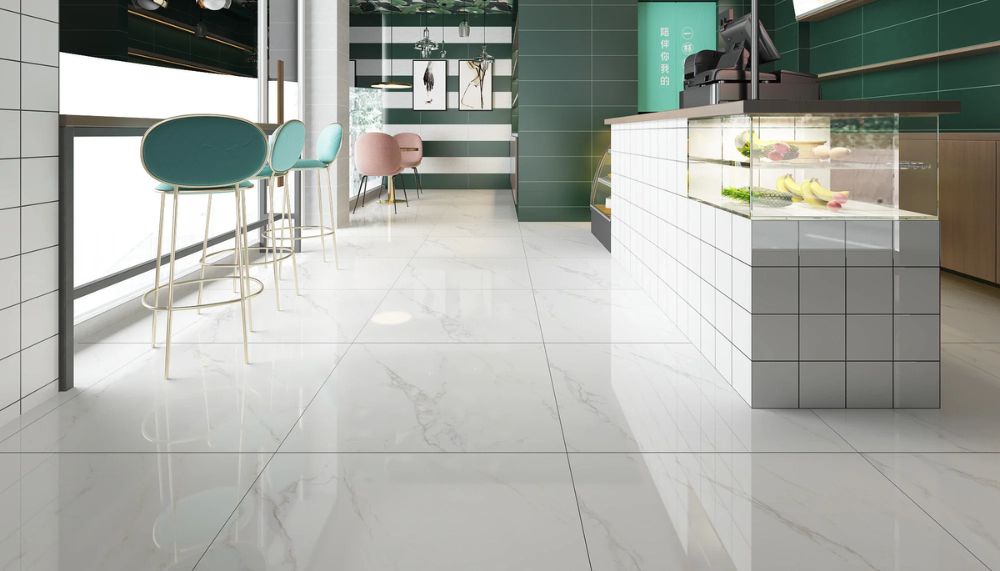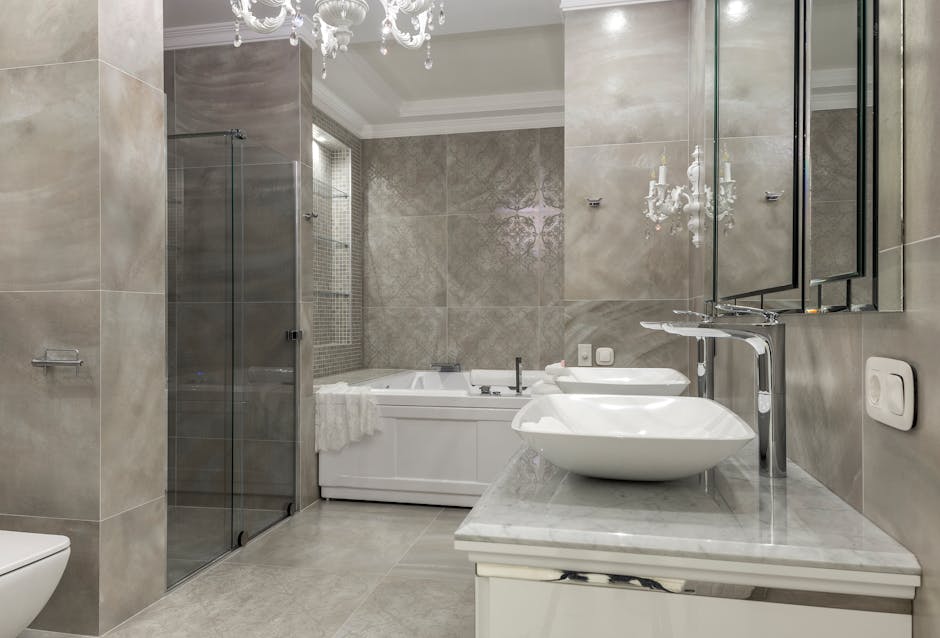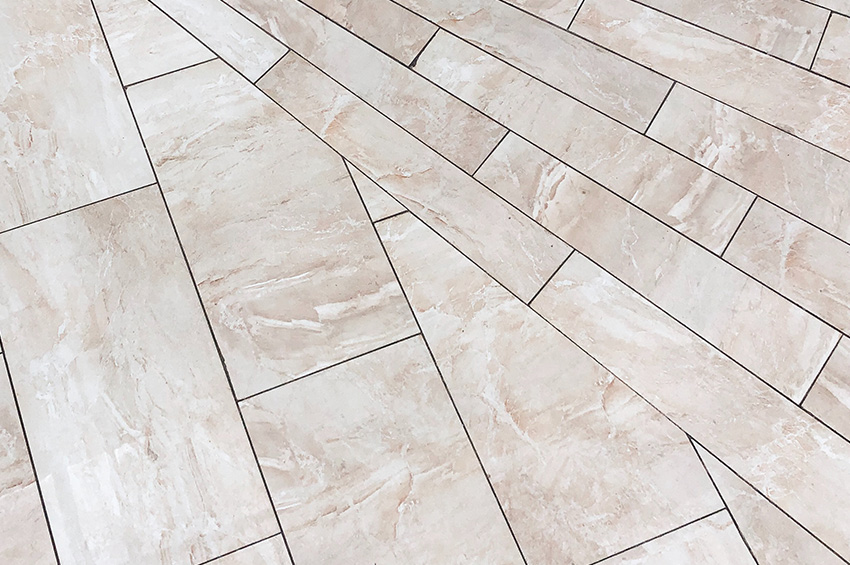Why Porcelain Tiles Are the First Choice of Modern Architects
In recent years, porcelain tiles have emerged as one of the most popular and versatile materials in modern architecture. From residential homes to commercial spaces and public buildings, architects increasingly favor porcelain tiles for their aesthetic appeal, durability, and functionality. This article delves into the reasons why porcelain tiles have become the first choice for modern architects, exploring their technical properties, design versatility, sustainability, and cost-effectiveness.
1. Superior Durability and Strength
One of the primary reasons architects opt for porcelain tiles is their exceptional durability. Porcelain tiles are made from a dense mixture of clay, quartz, feldspar, and other natural materials, which are fired at extremely high temperatures (up to 1,200°C or 2,192°F). This process results in a material that is highly resistant to wear, scratches, and impact.
- High Breaking Strength : Porcelain tiles can withstand heavy foot traffic, making them ideal for high-use areas such as shopping malls, airports, and office buildings.
- Resistance to Cracking : Unlike natural stone or ceramic tiles, porcelain tiles are less prone to cracking under pressure or due to temperature fluctuations.
- Water Resistance : With a water absorption rate of less than 0.5%, porcelain tiles are virtually impervious to moisture. This makes them perfect for wet areas like bathrooms, kitchens, and outdoor spaces.
The combination of these properties ensures that porcelain tiles maintain their integrity and appearance over time, even in challenging environments.

2. Aesthetic Versatility
Modern architecture often emphasizes clean lines, minimalist designs, and a seamless blend of indoor and outdoor spaces. Porcelain tiles excel in meeting these aesthetic demands due to their wide range of colors, textures, and finishes.
- Mimicking Natural Materials : Advances in manufacturing technology allow porcelain tiles to replicate the look of natural materials such as marble, wood, concrete, and stone. For instance, “wood-look” porcelain tiles provide the warmth and texture of real wood without its maintenance requirements or susceptibility to water damage.
- Customizable Sizes and Shapes : Porcelain tiles are available in various sizes, from small mosaics to large-format slabs that can cover entire walls or floors without visible grout lines. Large-format tiles create a sleek, modern appearance that aligns with contemporary design trends.
- Matte, Glossy, and Textured Finishes : Whether an architect is aiming for a polished, glossy finish or a matte, rustic look, porcelain tiles offer options to suit every design vision.
This versatility allows architects to achieve diverse styles while maintaining a cohesive and sophisticated aesthetic.
3. Low Maintenance Requirements
In modern architecture, where efficiency and practicality are key considerations, the low maintenance needs of porcelain tiles make them an attractive choice. Unlike materials such as carpet or hardwood, porcelain tiles require minimal upkeep.
- Stain Resistance : The non-porous surface of porcelain tiles prevents stains from penetrating, making them easy to clean with just water and mild detergent.
- Fade Resistance : Porcelain tiles are UV-resistant, ensuring that their color remains vibrant even when exposed to direct sunlight. This characteristic is particularly beneficial for outdoor applications like patios and pool decks.
- Hygienic Properties : The smooth surface of porcelain tiles inhibits the growth of mold, mildew, and bacteria, contributing to healthier indoor environments.
These features not only reduce long-term maintenance costs but also enhance the usability and longevity of the spaces designed with porcelain tiles.
4. Sustainability and Environmental Benefits
As sustainability becomes a central focus in modern architecture, architects are drawn to materials that minimize environmental impact. Porcelain tiles align with eco-friendly principles in several ways:
- Long Lifespan : Due to their durability, porcelain tiles have a longer lifespan compared to many other flooring materials. This reduces the need for frequent replacements, thereby minimizing waste.
- Recyclable Material : Many manufacturers now produce porcelain tiles using recycled content, and at the end of their life cycle, they can often be recycled again.
- Energy Efficiency : Porcelain tiles contribute to energy-efficient building designs by providing thermal mass, which helps regulate indoor temperatures. This can lead to reduced heating and cooling costs.
Additionally, the production of porcelain tiles has become more sustainable over time, with advancements in technology reducing energy consumption and carbon emissions during manufacturing.

5. Cost-Effectiveness
While porcelain tiles may have a higher upfront cost compared to some other materials, their long-term value makes them a cost-effective choice for architectural projects.
- Reduced Replacement Costs : The durability of porcelain tiles means they rarely need to be replaced, saving money on repairs and replacements over time.
- Lower Maintenance Expenses : As mentioned earlier, the low maintenance requirements of porcelain tiles translate into significant savings on cleaning and upkeep.
- Increased Property Value : High-quality materials like porcelain tiles can enhance the overall value of a property, making it more appealing to potential buyers or tenants.
For architects working on large-scale projects, the economic benefits of porcelain tiles cannot be overlooked.
6. Adaptability to Modern Trends
Porcelain tiles are uniquely positioned to meet the evolving demands of modern architecture. They seamlessly integrate into cutting-edge design concepts such as biophilic design, smart homes, and adaptive reuse projects.
- Biophilic Design : Porcelain tiles that mimic natural elements like wood and stone help bring the outdoors inside, fostering a connection between humans and nature—a core principle of biophilic design.
- Smart Home Integration : The flat, smooth surfaces of porcelain tiles are compatible with smart home technologies, including underfloor heating systems and automated cleaning robots.
- Adaptive Reuse : In renovation projects, porcelain tiles can be installed over existing surfaces without extensive demolition, preserving historical structures while updating their functionality.
This adaptability ensures that porcelain tiles remain relevant in an ever-changing architectural landscape.
7. Global Availability and Consistency
Unlike natural materials such as marble or granite, which can vary significantly in appearance and quality depending on the source, porcelain tiles are manufactured to precise specifications. This consistency is particularly valuable in large-scale projects where uniformity is essential.
- Standardized Quality : Manufacturers adhere to strict quality control measures, ensuring that each tile meets specific standards for size, thickness, and performance.
- Global Supply Chain : Porcelain tiles are produced worldwide, making them readily available in most regions. This accessibility simplifies logistics for architects working on international projects.

Conclusion
Porcelain tiles have earned their place as the first choice for modern architects due to their unparalleled combination of strength, beauty, sustainability, and practicality. Their ability to adapt to diverse design styles and withstand the test of time makes them an invaluable asset in contemporary architecture. Whether used in residential homes, commercial complexes, or public infrastructure, porcelain tiles continue to redefine the boundaries of creativity and functionality. As architectural trends evolve, it is likely that porcelain tiles will remain at the forefront of innovation, offering solutions that meet both aesthetic aspirations and technical requirements.
By choosing porcelain tiles, architects not only create visually stunning spaces but also ensure that these spaces are built to last, embodying the principles of modern architecture: form, function, and sustainability.
قیمت های موجود در سایت تاریخ بروزرسانی آن ها ذکر شده و قیمت نهایی محصولات نمی باشند. لطفا جهت ثبت سفارش و استعلام قیمت بروز با کارشناسان ما در ارتباط باشید.
(035-3357)